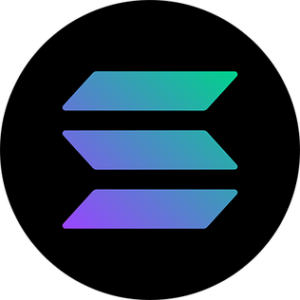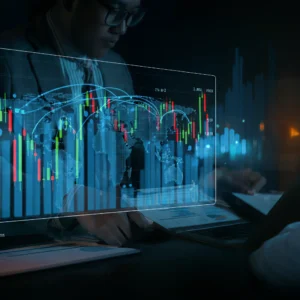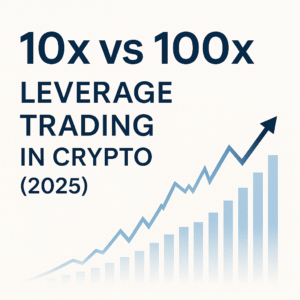Margin trading has become a core strategy for crypto traders in 2025. With the rise of platforms like Binance, Bybit, and OKX, even beginners now have access to leveraged futures trading — where you can control big positions using a small amount of your own money.
But margin isn’t just about leverage and profit. It’s also about risk, liquidation, and understanding how different margin types — Isolated and Cross — protect (or expose) your funds. Many traders jump in without understanding these key concepts, and that’s where mistakes happen.
Knowing how margin works, how it connects with leverage, and how liquidation can wipe out your trade is no longer optional — especially if you’re trading in volatile markets. The more you know, the better you control your trades.
This guide breaks it all down simply — from margin basics to advanced differences, so whether you’re new or looking to optimize your strategy in 2025, this is for you.
What Is Margin in Crypto Futures Trading?
In simple words, margin is the money you put in to open a trade in the futures market. It’s like a security deposit — your skin in the game. The exchange allows you to use this deposit to control a much bigger trade through leverage.
For example:
You use $100 margin with 10x leverage → you open a $1,000 trade.
Margin determines how much you can trade, how much you might lose, and how far the price can go before you get liquidated. So, it’s the core of both opportunity and danger in futures.
Why Understanding Both Types of Margin Is Important
There are two types of margin in crypto futures:
-
✅ Isolated Margin (risk is limited to one trade)
-
Cross Margin (risk shared across all open trades/wallet balance)
If you don’t know the difference, you may accidentally risk your entire balance thinking you’re only risking one trade. That’s why understanding margin types is critical for protecting your funds.
Smart traders in 2025 always choose the right margin mode based on trade size, leverage, and market volatility.
Simple Breakdown: Margin, Leverage, and Liquidation
Here’s how these 3 terms connect:
-
Margin: The money you use to open a position
-
Leverage: Multiplies your buying power (2x, 10x, 100x)
-
Liquidation: Forced closure when your margin drops too low
Margin supports the trade
⚙️ Leverage expands the size
Liquidation ends it if margin can’t hold losses
Who Needs to Know This in 2025?
-
New traders trying futures for the first time
-
Freelancers and side-income seekers using crypto for growth
-
Pro traders scaling risk with multiple open positions
-
DeFi & Web3 investors managing leveraged strategies
Crypto isn’t just for tech pros anymore — people from every background are entering futures markets. That’s why understanding margin isn’t optional. It’s part of trading responsibly in 2025.
What Is Initial Margin?
Initial margin is the starting amount of money you must deposit to open a futures trade. It acts like a security deposit — something you put down to show the exchange that you’re serious and can handle the risk.
This margin is not a fee — it’s your money being used to support a larger position through leverage. If the trade goes well, you get your margin back along with profit. If it goes against you, losses are subtracted from your margin until it’s gone.
Think of it as a ticket that gives you access to a bigger trade — but also keeps you responsible for potential loss.
Easy Definition for Beginners
Initial margin is the minimum amount of your own money you need to open a trade using leverage.
It’s calculated based on:
-
The size of your trade
-
The leverage you choose
-
And the risk rules of the platform
It doesn’t matter if you’re trading $1,000 or $10,000 — the exchange will only let you open the position if you have enough initial margin to back it.
How Much Money You Need to Open a Trade
Here’s a quick formula:
Initial Margin = Trade Size ÷ Leverage
So if you want to open a $1,000 trade with:
-
10x leverage → you need $100 margin
-
20x leverage → you need $50 margin
-
50x leverage → you need just $20
Higher leverage = lower margin needed, but it also means your trade is more sensitive to small price drops.
Example: Using $100 with 10x Leverage
Let’s say you have $100 and want to open a trade on BTC using 10x leverage.
Here’s what happens:
-
Trade size = $100 × 10 = $1,000
-
Your margin (your money) = $100
-
If BTC goes up by 2%, you make $20 profit
-
If BTC goes down by 2%, you lose $20 from your margin
Now imagine if the price drops 10% — you’ll lose your full $100, and the trade will be liquidated.
That’s why knowing your initial margin and calculating risk before entering is key.
What Happens If You Don’t Meet the Initial Margin?
If you don’t have enough margin:
-
❌ The trade won’t open
-
Or, if your balance drops below the required level after entry, the exchange may auto-reduce your position size
-
In worst cases, it might trigger liquidation early if you’re already close to the danger zone
Exchanges don’t give you credit or time — if your margin isn’t enough, your trade gets blocked or closed.
✅ Tip: Always check the “Required Margin” or “Initial Margin” box before confirming any futures order.
What Is Maintenance Margin?
Maintenance margin is the minimum amount of money you must keep in your position to avoid liquidation. It’s the line that separates an active trade from a closed one. If your margin balance drops below this level, the exchange will automatically shut down your trade.
It works like a warning zone. Your trade is open and running, but if the price moves against you and your margin gets too low, the system steps in to protect itself — and your trade is force-closed.
Many traders confuse initial margin with maintenance margin. Remember:
-
Initial margin is what opens the trade
-
Maintenance margin is what keeps it alive
Simple Meaning of Maintenance Margin
Maintenance margin is like the fuel left in your trade. If it runs too low, your engine (trade) shuts off automatically.
It’s not fixed — it depends on:
-
Your trade size
-
The leverage you chose
-
The platform’s risk rules
-
Current market volatility
Most exchanges set the maintenance margin around 0.5% to 1% of your total trade size. But the higher your leverage, the smaller your buffer becomes.
The Minimum Amount You Must Keep to Avoid Liquidation
Here’s the reality: if your margin drops too low, your position won’t survive.
Example:
-
You open a $1,000 trade using $50 margin (20x leverage)
-
Maintenance margin is 0.5% of $1,000 = $5
-
If your losses bring your equity below $5 → your trade is liquidated
So even though you put in $50, the moment your trade loses $45, the system sees only $5 remaining and auto-closes your position to avoid deeper losses.
You don’t lose more than you invested in isolated margin, but in cross margin, more wallet funds may be used before liquidation.
Example: What If Your Trade Goes Against You?
Let’s say:
-
You long BTC at $103,000 with $100 margin and 10x leverage
-
BTC drops 8% → your trade loses $80
-
You now have only $20 left in margin
-
If maintenance margin requirement is $15, you’re still alive — but barely
-
If BTC drops a bit more and your margin hits $15 or less → liquidation triggers
Your position is closed automatically, and you lose your $100 margin. This is how fast it happens — especially with high leverage and small buffers.
That’s why it’s critical to monitor the margin ratio and liquidation price while trading.
How Exchanges Use This to Protect Their Funds
Exchanges like Binance, Bybit, and OKX don’t want to lose money when giving you leverage. So they monitor all positions 24/7 using auto-risk engines. Maintenance margin acts as the final defense line before they step in.
If they allowed you to go into deep losses, it would affect platform stability. So, to protect themselves:
-
They calculate liquidation price based on your margin level
-
They shut down your trade before your loss becomes bigger than your deposit
-
In cross margin, they may also pull more funds from your wallet to keep the trade alive longer
This isn’t personal — it’s part of how margin trading works globally.
Key Differences Between Initial and Maintenance Margin
In crypto futures trading, both initial and maintenance margin play important but different roles. One helps you start a trade, and the other helps you keep it alive.
Confusing them can lead to poor planning, unexpected liquidation, or not opening a trade at all. That’s why understanding exactly when each one applies and how they work together is essential for safe margin trading.
When They Apply in the Trade
Initial margin is applied when you enter the trade. It’s the amount needed to open a position — like a ticket to participate in the market.
Maintenance margin kicks in after your trade is live. It’s the level you must maintain to avoid liquidation. Think of it as the minimum gas needed to keep your trade running.
If your equity falls below the maintenance margin, the trade is closed automatically — regardless of your strategy or future expectations.
Simple Rule:
Initial Margin = Entry cost
Maintenance Margin = Survival cost
Which One Is Higher and Why?
Initial margin is always higher than maintenance margin.
Why? Because the exchange wants to be fully covered at the start. You’re using leverage — which means you’re borrowing most of the trade value. So the platform asks for a decent upfront deposit to open your position.
But once the trade is running, the risk engine only needs to know the minimum amount to keep that position afloat. That’s why maintenance margin is lower — often just 0.5% to 1% of your total trade size.
Table: Side-by-Side Comparison
| Feature | Initial Margin | Maintenance Margin |
|---|---|---|
| When It Applies | At trade entry | During the trade |
| Purpose | Opens the position | Keeps it open, prevents liquidation |
| Amount | Higher | Lower |
| User Control | Shown before order is placed | Shown while trade is running |
| What Happens If Low | Trade won’t open | Trade gets liquidated |
| Can You Refill It? | Yes, by changing leverage or position | Yes, by adding margin manually |
| Risk Impact | Determines position size & leverage | Determines when liquidation will occur |
✅ Understanding both margins helps you plan better, set smarter leverage, and avoid unwanted liquidations — especially in volatile markets.
Shall I move on to “What Is Liquidation Price and How to Calculate It?” next, bhai?
Liquidation and Margin Call Explained
In crypto futures, liquidation is the worst-case scenario — it means your position is forcefully closed because your margin can no longer support it. When your losses get too close to your maintenance margin level, the exchange steps in and shuts the trade down.
This happens to protect both you and the platform from going into negative balances. For traders using high leverage or small margins, liquidation can happen fast — even from a 1% to 3% market move.
Knowing what liquidation is, how to track your margin, and what to do if you’re close to it, can save your capital from disappearing instantly.
What Is Liquidation in Crypto?
Liquidation is the automatic closure of your futures trade when your account equity falls below the required maintenance margin.
The exchange doesn’t ask for permission — it just ends your trade to avoid further loss. You lose your margin, and the position is closed at the market price.
Key Point: If your trade is liquidated, you don’t just lose part of your capital — you lose the entire margin you put into that trade.
How Low Maintenance Margin Causes Liquidation
Every position has a maintenance margin level (usually 0.5%–1% of the total trade size). If your trade starts losing and your margin balance drops close to that level, liquidation is triggered.
Let’s say:
-
You open a $1,000 position with $50 margin (20x leverage)
-
Maintenance margin is $5 (0.5%)
-
As the market drops, your margin falls to $5 or less
-
The trade is immediately liquidated
Even if you still believe the market will reverse, the system won’t wait — it protects itself first.
What Is a Margin Call and What to Do About It
A margin call is a warning from the exchange that your margin is running low and you’re approaching liquidation. It gives you a chance to act before your position is force-closed.
What you can do:
-
Add more margin to increase your buffer
-
Reduce position size to lower risk
-
❌ Manually close the trade to avoid deeper losses
-
Set a stop-loss earlier next time to avoid hitting the call zone
Some platforms send push notifications or in-app alerts when a margin call is near. If ignored, liquidation usually follows within minutes.
Tools to Track Your Margin Level in Real-Time
To avoid liquidation, you should always track your margin health. Most platforms offer live tools to help you do this:
-
✅ Margin Ratio % – Shows how close you are to liquidation (higher = more risk)
-
Liquidation Price Display – Live value showing the price at which your trade will auto-close
-
️ Alerts & Notifications – Margin call warnings and liquidation alerts
-
Mobile App Widgets – Real-time tracking on the go
-
Built-in Calculators – Estimate liquidation price before opening a trade
These tools are your early warning system — use them like a speedometer. Don’t wait for the crash to react.
How to Manage Both Margins Smartly
Margin trading can be profitable — but only if you manage both initial and maintenance margin wisely. Most traders lose not because of bad entries, but because they don’t protect their margin after opening a trade.
Managing your margin is all about preparation, discipline, and smart usage of tools. If you plan your trades before entering and keep tracking risk in real time, you can survive even the wildest market swings.
✅ Start with Low Leverage (2x–5x)
High leverage gives bigger profits — but also brings faster liquidation. Beginners should always stick to 2x to 5x leverage when learning.
This keeps your maintenance margin buffer safer, and even if the price moves 5–10% against you, you’ll still have room to adjust instead of getting liquidated immediately.
Low leverage also gives you time to learn without panic, and lets you exit trades based on logic — not pressure.
❌ Don’t Invest Full Wallet in One Trade
Never put your entire wallet balance into a single trade. That’s the fastest way to lose everything in a liquidation.
Instead, follow this smart rule:
-
Use only 10–30% of your wallet per trade
-
Keep the rest safe as reserve margin or for later opportunities
If your trade fails and your margin is gone, you’ll still have capital left to bounce back. One trade should never decide your future.
Set Alerts for Margin Drop
Most exchanges now allow you to set alerts when your margin ratio gets close to dangerous levels (like 80%, 90%, or 100%).
These alerts can come via:
-
Email
-
SMS
-
In-app notifications
-
Push messages on mobile
Use them like a safety alarm. Instead of watching the screen 24/7, these alerts help you stay prepared even when you’re away.
Use Margin Calculator Before Entering Any Position
Before opening any trade, use the margin calculator provided by platforms like Binance, Bybit, or OKX. It helps you check:
-
How much margin you need
-
What your liquidation price will be
-
How funding fees or leverage will impact your position
-
How small price moves affect your capital
Using this tool gives you full visibility before you even click “Buy” or “Sell.” It’s like checking weather before going out — smart traders don’t skip it.
Real Examples (2025 Scenario)
Understanding margin theory is good — but seeing it in real 2025 examples makes it truly click. In this section, we’ll walk through an actual BTC/USDT trade example using 10x leverage and break down exactly how margin behaves — from entry to liquidation risk.
We’ll also look at how major exchanges like Binance, Bybit, and OKX treat margins differently, and what real traders experienced during fast price drops in 2025.
BTC/USDT 10x Leverage Trade Example (2025)
Let’s say you want to long BTC/USDT at a 2025 price of $103,000, using 10x leverage on Binance Futures.
Trade setup:
-
Trade size = $5,000
-
Leverage = 10x
-
Required margin = $5,000 ÷ 10 = $500 initial margin
-
Maintenance margin (0.5%) = $25
-
Liquidation price = approx $98,600 (after ~4.3% drop)
If BTC falls from $103,000 to $98,600, your position is liquidated, and you lose the full $500 margin.
This is why even a 4–5% drop can completely erase leveraged trades, especially when you’re overexposed.
What Margin Numbers Look Like at Entry and Drop
At Entry:
-
Equity = $500
-
Position size = $5,000
-
Margin ratio = low (~10–15%)
-
Liquidation buffer = ~$4,400 price drop space
After a 3% BTC drop (~$3,100):
-
Equity = ~$200
-
Margin ratio = rises to 60–70%
-
Liquidation now dangerously close
At 4.3% drop (~$4,400):
-
Equity = ~$25
-
Margin hits maintenance level
-
Trade is liquidated — you lose all $500
Even small price drops are deadly with leverage. That’s why constant margin monitoring is non-negotiable.
⚖️ How Different Exchanges Set Margin Levels (2025 Updates)
Binance:
-
Initial margin: Auto-calculated based on position size and leverage
-
Maintenance margin: ~0.5% on standard contracts
-
Tools: Margin ratio %, liquidation alerts, auto-top-up (optional)
Bybit:
-
Slightly higher maintenance margin on some alt pairs (~0.6–1%)
-
Cleaner liquidation price display
-
ADL (auto-deleverage) ranks your position risk level in real time
OKX:
-
Allows flexible margin across multiple assets
-
Maintenance margin adapts based on volatility
-
Margin ratio turns red when you hit 80% or more — warning zone
Each platform has its own formulas, but the logic remains the same:
Your position dies the moment your margin can’t defend against the loss.
Learning from Real Liquidation Events
In April 2025, during a sudden BTC dump from $104K to $99K in under 10 minutes, thousands of traders across platforms saw mass liquidations.
Case study:
-
A trader on Bybit entered a 20x long at $103,800 with $100 margin
-
Trade size = $2,000
-
Liquidation price = ~$98,700
-
BTC dropped to $99,000 → 1 more candle took it to $98,500
-
Result: Instant liquidation — $100 margin gone in seconds
Thousands of similar positions were wiped out due to high leverage, tight margin, and no stop-loss.
✅ Lesson:
Margin + leverage without planning = liquidation.
Real-world examples show why it’s not about how much you can make — it’s about how long you can survive.
Platforms and Tools to Help You
In margin trading, the right tools make all the difference between a smart, calculated trade and a blind risk. Whether you’re a beginner or a daily trader, the features offered by platforms like Binance, Bybit, and OKX can help you stay ahead of liquidation, fees, and poor decisions.
Let’s explore the most useful tools these platforms offer to help you trade with confidence in 2025.
Margin Calculators on Binance and Bybit
Before entering a trade, always use the built-in margin calculators to preview how much capital you’ll need, what your liquidation price will be, and what your estimated risk looks like.
Binance Calculator Features:
-
Calculates required initial margin
-
Shows estimated liquidation price
-
Includes funding fee preview
-
Available on both web & mobile app
Bybit Margin Tool:
-
User-friendly interface
-
Lets you input leverage, trade size, and entry price
-
Instantly shows PnL potential, margin required, and stop-loss impact
Using these calculators before opening a trade is a non-negotiable habit — especially if you’re trading with high leverage or tight capital.
️ Auto-Deleverage (ADL) Feature for Protection
When the market becomes extremely volatile, and too many traders get liquidated at once, exchanges use auto-deleverage (ADL) to keep the system stable.
How ADL helps you:
-
Instead of spreading losses to the platform, ADL closes positions starting from the highest profit + highest leverage
-
ADL score (shown in bars or levels) helps you track how close your position is to forced closure
-
If your ADL rank is high (e.g. 4/5 bars), you’re next in line if the system activates
Platforms like Bybit show ADL score live with each open position. Binance includes it as part of their liquidation risk tool. Staying aware of this score helps you avoid unexpected closures — even if you’re in profit.
Risk Management Dashboards for Beginners
Modern platforms now include risk dashboards that give you a complete overview of all your open trades, margin usage, liquidation prices, and wallet health — all in one place.
These dashboards typically include:
-
Margin ratio meters
-
Unrealized PnL
-
Leverage summary
-
Liquidation risk alerts
-
Trade-by-trade analysis
Bybit’s Dashboard is clean, beginner-friendly, and shows everything from margin risk to funding countdowns.
Binance’s Dashboard is more detailed — better suited for those with multiple active trades or strategies.
These tools help you stop guessing and start managing — smartly and visually.
Where to See Your Margin Usage Live
You can track your real-time margin usage in the “Positions” or “Futures Wallet” tab on every major platform.
What to look for:
-
Margin Ratio (%) – Shows how close you are to liquidation
-
Liquidation Price – Updates live with market movement
-
Maintenance Margin – Listed in trade details
-
Wallet Balance vs. Used Margin – Shows how much capital is still available to support your trade
Some exchanges like OKX and MEXC also color-code the danger level — green (safe), yellow (watch), red (near liquidation).
Using this info regularly helps you manage your capital better — and avoid waking up to a closed position.
Conclusion
Margin trading gives you the power to control big positions with small money, but that power comes with responsibility. Two key forces control your trade: initial margin and maintenance margin. One lets you start the trade, the other helps it survive. If either one fails, so does your position.
Initial margin is like your entry ticket — it opens the door to futures trading using leverage. But once inside, it’s maintenance margin that decides how long you can stay in the game. If your equity falls below that level, your trade is closed — no warnings, no second chances.
Many traders focus too much on profits and ignore their margin levels. That’s a mistake. In crypto futures, even a 1% price drop can wipe out your margin if your leverage is too high. Don’t treat margin as just a number — treat it like your lifejacket.
Small mistakes in margin trading can cost everything — your trade, your capital, and your confidence. All it takes is one unplanned move, or one missed margin alert, and your account balance goes to zero.
✅ The smart way? Trade with margin like a professional:
-
Use calculators
-
Set alerts
-
Avoid overleverage
-
Know your liquidation price
-
Use stop-losses
-
And never go in blind
Your best weapon isn’t leverage — it’s planning.
Plan your risk. Protect your capital. Let the profits come naturally.
Can I change my margin after opening a trade?
Yes, you can manually add more margin after opening a trade — especially in isolated margin mode. This helps reduce your liquidation risk.
In cross margin, your full wallet is already supporting your position, so manual top-up isn’t required, but it does expose more funds automatically.
Why does maintenance margin vary between exchanges?
Each exchange uses its own risk engine to calculate maintenance margin based on volatility, asset type, and leverage.
For example, Bybit may require more margin for volatile altcoins, while Binance uses tiered margin levels based on position size.
What if my margin level is below maintenance but not liquidated?
If your margin drops below the required level, you’re on the edge — liquidation could happen any moment.
Some exchanges wait for the price to hit liquidation exactly, but during this time you can still add margin or close the position manually.
Is high initial margin safer?
Yes — higher margin means lower leverage, giving your trade more room to breathe and reducing your liquidation risk.
It’s a smart choice for beginners or when the market is highly volatile.
How do I check my liquidation price in advance?
Use the margin calculator on platforms like Binance or Bybit before entering the trade.
Once your trade is live, you’ll see the liquidation price in your “Open Positions” tab, along with your margin ratio and risk level.









